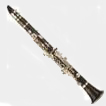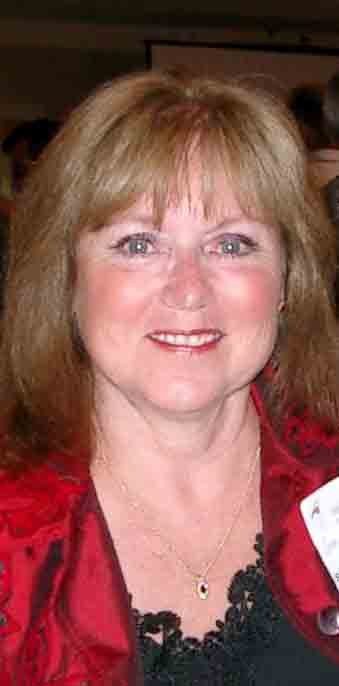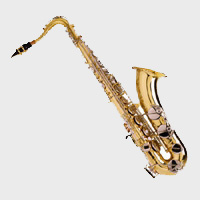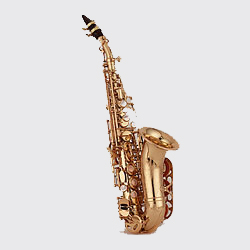




Stencils and "Second Line" Models
By Pete Hales
What's a "Stencil"?
"Stencil" is a word that is specifically supposed to refer to a saxophone built
by a major sax manufacturer for another company or storefront. On receipt of the
saxophone, the store would literally take a stencil and engrave its own name or
design on the horn.
The definition of "stencil" is usually expanded to include "second line"
horns (see below), most notably the Conn Pan American. This isn't exactly
correct usage.
American stencil manufacturers were generally:
* Conn
* Buescher
* Martin
* Occasionally Holton
* Occasionally HN White (King)
Non-American stencil manufactures were generally:
* Couesnon (French)
* Kohlert (German/Czech)
* Evette & Schaeffer, Buffet-Crampon (French)
* Keilwerth (German/Czech)
* SML (French)
* Beaugnier (French)
* Pierret (French)
* Amati (Czech; notably the King Lemaire)
* Karl Meyer (German; notably one of the Selmer Pennsylvania models)
* Yamaha (Japanese; notably the 1980's Vito)
* Yanagisawa (Japanese; notably the Martin Galaxy)
American stencils generally...
* Have a different serial number chart than the pro horns from the
manufacturer. For example, a Martin-built Vega will not have a serial number
that corresponds to the known Martin serial number charts.
* Were built after 1920.
* Have a reduced feature set than the pro horns they were stenciled from. For
example, Conn stencils don't have rolled tone holes.
* Are lower quality than the pro horns they were stenciled from
* Have designs that were based on earlier tooling. For example, if Selmer
produced a stencil of their Mark VII, it would have the "look and feel" of the
Mark VI.
* Were made with cheaper materials
* Have limited engraving
* Are low pitch, A=440hz (modern intonation) horns. I still recommend checking
with a tuner, in case some are high pitch and aren't marked.
* Had new designs introduced on them first, especially if the manufacturer
didn't think that the new design would work well or be acceptable to the
public. If the design was good, it occasionally found its way onto the pro
models.
* Were made by the lowest bidder for the contract. For instance, if the Vega
company requested a bunch of saxophones, they would buy them from whoever was
the cheapest supplier: This means that one stencil was not always made by one
specific company. In the case of the Vega, I've seen examples from Conn,
Buescher, Martin, King, and Evette & Schaeffer
European and Asian stencils generally don't suffer from the same problems of
American stencils: they had mostly the same feature set (i.e., look and feel) of
the pro or intermediate horn they were stenciled from, they just have different
engraving. For example, the King Marigaux is a stencil of the SML Gold Medal
"Mk. II". The differences between the two horns are different engraving and that
the Marigaux doesn't appear to have as many finish choices available for it.
These are general rules for stencils, of course. There are many interesting
exceptions: Keilwerth made sax bodies for many different companies in Germany
and not all these horns are exceptionally good. Lyon and Healy (an American
company) occasionally designed their own horns, but had other companies
fabricate them. The list goes on.
How can I tell who made my stencil?
For European/Asian horns, as mentioned above, it's easy: they look EXACTLY
like their pro/intermediate counterparts except for the engraving. The biggest
exceptions are Keilwerth and Beaugnier. These two manufacturers tended to make
custom horns for other companies and/or provided parts to different
manufacturers, as well as producing stencils of their own pro and "intermediate"
lines.
For American-made horns,
* If the horn has a Mercedes-Benz-logo low C keyguard , the horn was made
by Conn. (Note that these keyguards are not found on some curved sopranos and
that straight sopranos and sopraninos don't have keyguards).
* If the horn has bevelled toneholes , the instrument was produced by Martin.
* If the horn has "smooth" keycups , the horn was made by King (there are very
few King stencils).
* All Martin and King basses (even those labeled "Martin" or "King") were
produced by Conn or Buescher.
* A rare few Conn-labeled basses and all contrabasses were made by Buffet
(Evette & Schaeffer). These horns were labeled as such to get around import
duties.
* Holton stencils generally have additional odd keywork, as well as very thin
construction (there are extremely few Holton stencils).
* Buescher stencils are a bit hard to spot. The easiest of determining that
you have a Buescher-made stencil is to say it doesn't have any of the above
features. The best way, however, is to look at the octave vent mechanism (see
below).
There are several alternative ways to determine who made your stencil. The
best suggestions are found in this EXCELLENT article from Dr. Rick's Music
(there is another article on the Cybersax website that's also of some use). Of
course, you can also look at pictures of a variety of pro horns and go from
there. Just note that the most common American stencils were made by Conn and
Buescher (in approximately that order).
Please also note that Lyon & Healy and York, amongst many others, made their
own instruments until about 1920, when Conn and Buescher essentially took
control of the American saxophone market. Also note that FA Buescher left the
company that bears his name in the late 1920's and then founded another company
that used Martin stencils for their saxophone line!
What's a "Second-Line" Instrument?
The best way of thinking of a second-line instrument is that they are
student/intermediate horns sold by a major saxophone manufacturer. It is too
complex to get into the subject of European and Asian second-line horns, so
let's deal with the most common American second-line:
* The Conn Pan-American
* The Martin Indiana
* The King Cleveland
* The Buescher Elkhart
In all the above cases EXCEPT for Conn, the name of the second-line
instrument comes from the name of a company that was bought out (for example,
the Indiana Band Instrument company was purchased by Martin). In all cases,
these horns generally follow the rules for stencils, except that they were
actually sold by the companies that produced them -- they just had different
names on the bell.
Interesting notes:
* The Conn Pan-Americans did not always use the same tone-hole layout of
the Conn New Wonder. The keywork also gradually got more and more dissimilar
than that found on the Conn pro line and was then used on the Conn Director
instruments of the late 1950's and 1960's.
* The King Cleveland was actually produced by the Cleveland Band Instruments
company, as a kind of "wholly owned subsidiary" of the HN White Company after
HN White purchased them in 1925. Also, the Cleveland has its own serial number
chart and, while they have the distinctive keywork of other King saxophones,
the body is rather dissimilar.
* The Buescher Elkhart is sort-of a stencil: an Elkhart-labeled horn is an
older True Tone model, made with the same old tooling, but made in the 1930's
(or so). The Elkhart, however, is engraved as such and was available in
lacquer.
* The quality of second-line horns was generally higher than their stencil
brethren.
How much is my stencil or second-line horn worth?
For European/Asian horns, the answer is: "As much as the horn it was
stenciled from". For American horns, the answer is: generally not that much. The
exceptions are horns with gold plated bodies and/or keywork (there are some
beautiful, high quality Selmer New York horns out there, a stencil made
generally by Conn), horns with extremely elaborate engraving, horns with
"prototype" keywork, horns that were owned by someone famous (provided you can
prove it) and sopraninos, baritones, basses and contrabasses (although stencil
curved sopranos are starting to gain value, too).
Broadly speaking, subtract about 25% off the value of the pro horn it was
stenciled from and that's the value of your horn.
The major exception to this value rule is brass, lacquer or silver C melody
tenors (excepting odd designs). Don't expect to get more than $300 US for these,
ever.
This is not to say that stencils/second-line horns are all bad. Some can be
extremely good. It's just that the ratio of bad to good is higher. ALWAYS play
test a horn thoroughly before you buy.
Final Comments: "Copycat" Horns
You probably have seen an eBay ad or three touting a horn as being "A copy
of the Selmer Mark VI!", "Has the same keywork as the Selmer Super 80!" or
something similar. These horns fall into a couple categories:
* Asian (generally Chinese or Korean) copies of French-made horns (or
horns "Manufactured under the supervision of French craftsmen!")
* Czech copies of Keilwerth horns
* German copies of Keilwerth horns
* Italian horns based on French designs
These are generally horns you don't want to buy. There are some notable
exceptions, the easiest example being the Yamaha 62 and better: these horns are
essentially copies of the Selmer Mark VI and Super 80, but they are
exceptionally good copies.
Just remember: a copy is only as good as the craftsmen copying it and the
materials that they use.
You also should beware of advertisements in ALL CAPS or that have too many
exclamation marks!!!!
Again, repeat this mantra: Always play test a horn before buying it.







